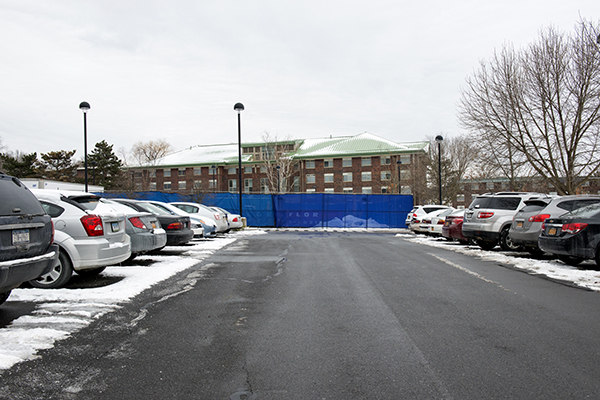

With construction at various locations around campus, including renovations to LeFevre Hall, Wooster Science Building and construction of a new residence hall in the South Complex, the locale of available parking spaces have shifted.
“The perception is that parking is gone,” Assistant Vice President of Administration and Finance Julie Majak said about the relocation of spaces throughout campus.
Majak said that while many of the lots in the heart of campus have gone away, the number of spaces remains roughly the same.
According to Director of Facilities, Construction and Design John Shupe, the Route 32 parking extension, which was constructed with permeable asphalt filters, was completed last year and added approximately 140 spaces. A portion of lot 23B next to the Admissions and Alumni Center was made exclusively for student parking. Lot 35 behind Esopus Hall was changed to an overnight lot. A column in lot 28 is now reserved for students and the newly constructed Lenape parking lot has 198 spaces.
Those spaces will combat the loss of parking lot 37A where the new residence hall is currently being constructed, as well as approximately 20 spaces lost due to the renovations on Lefevre Hall. Plattekill Lot 18 at the edge of campus is also planned to be closed at some point this semester according to Director of Facilities, Construction and Design John Shupe, where a new science building will be created.
Shupe said the ultimate goal of maneuvering the parking is to create a pedestrian-friendly, walking campus, something outlined in the School’s Site and Landscape Master Plan.
According to the plan, one of the major themes is to create an “inviting and accessible” campus through various modifications.
“To achieve this goal, the plan proposes several changes to create new and better accessible routes through the landscape and places of the campus.”
The overall plan proposed to move parking from the center of campus out towards the peripheral, so that students, faculty and staff will, for the most part, park on the edges of campus and walk to their classes and offices, a move that Shupe said is more in line with other college campuses as well as a more sustainable alternative.
Shupe also said that these changes would help decrease the likelihood of pedestrian and vehicular conflicts.
According to Shupe, student ticket writers conduct campus lot counts to keep track of the number of empty spaces in lots across the campus. The most recent lot count from last semester revealed that there were often approximately 600 empty spaces in campus lots at any given time.
An updated version of the campus map is available on the New Paltz website.
